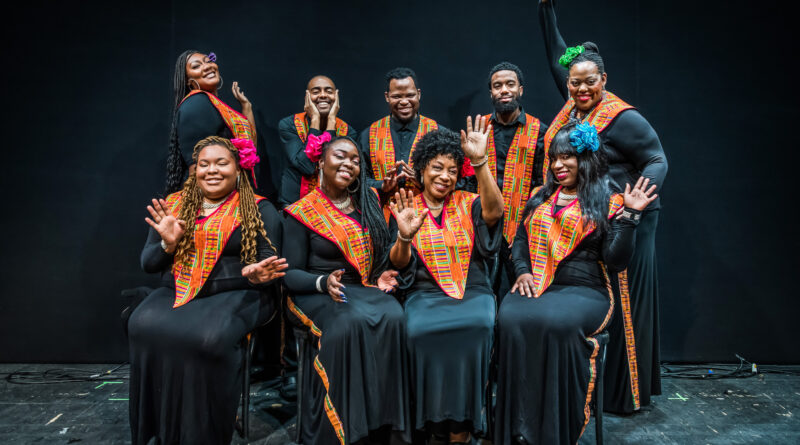25 Things To Do In Harlem New York
Harlem, New York, is a neighborhood rich in history, culture, and vibrant energy. From historic landmarks to lively entertainment venues, Harlem offers a unique blend of experiences that reflect its diverse heritage. Whether you’re interested in music, art, history, or food, here are 25 must-do activities that showcase the best of Harlem.
1. Visit the Apollo Theater
The Apollo Theater is one of Harlem’s most iconic landmarks, known for its pivotal role in launching the careers of countless music legends. Opened in 1914, the Apollo has hosted performances by stars like Ella Fitzgerald, James Brown, and Aretha Franklin. Today, you can attend a live show, participate in the famous Amateur Night, or take a guided tour to learn about the theater’s rich history.
2. Explore the Studio Museum in Harlem
The Studio Museum in Harlem is dedicated to showcasing the work of African American artists and artists of the African diaspora. Founded in 1968, the museum features a rotating selection of exhibitions, installations, and educational programs that highlight contemporary and historical art. It’s a must-visit for art lovers looking to explore African American culture through visual art.
3. Stroll Through Marcus Garvey Park
Marcus Garvey Park, located in the heart of Harlem, is a green oasis that offers a peaceful escape from the city’s hustle and bustle. The park is named after the influential Black nationalist leader and features an amphitheater, playgrounds, and walking paths. It’s also home to the historic Harlem Fire Watchtower, which dates back to the 1850s.
4. Enjoy a Gospel Service
Harlem is known for its powerful gospel music, and attending a gospel service at one of the neighborhood’s historic churches is a moving experience. Churches like the Abyssinian Baptist Church and the Mother African Methodist Episcopal Zion Church welcome visitors to their Sunday services, where you can hear soul-stirring gospel music that has been a cornerstone of Harlem’s spiritual and cultural life.
5. Walk Along Strivers’ Row
Strivers’ Row is a historic district in Harlem, famous for its beautifully preserved row houses built in the late 19th century. These homes were initially constructed for upper-middle-class white residents but became a symbol of success for African American professionals during the Harlem Renaissance. A walk along Strivers’ Row offers a glimpse into Harlem’s architectural and cultural history.
6. Discover the Schomburg Center
The Schomburg Center for Research in Black Culture is part of the New York Public Library and is one of the world’s leading institutions dedicated to the preservation and study of African American, African Diaspora, and African experiences. The center offers a wealth of resources, including manuscripts, photographs, and rare books, along with exhibitions that explore the global Black experience.
7. Dine at Sylvia’s Restaurant
Sylvia’s Restaurant is a Harlem institution that has been serving up classic soul food since 1962. Founded by Sylvia Woods, known as the “Queen of Soul Food,” this iconic eatery is famous for its fried chicken, collard greens, and cornbread. Dining at Sylvia’s is more than just a meal—it’s a taste of Harlem’s rich culinary tradition.
8. Take a Harlem Renaissance Walking Tour
A Harlem Renaissance Walking Tour is a great way to explore the cultural and literary history of Harlem. Guided tours take you through the streets where figures like Langston Hughes, Zora Neale Hurston, and Duke Ellington once lived and worked. You’ll learn about the Harlem Renaissance, a period of extraordinary artistic and intellectual activity during the 1920s and 1930s that shaped the identity of Harlem and influenced American culture.
9. Relax at the Harlem Meer
The Harlem Meer is a beautiful lake located in the northern part of Central Park. It offers a serene spot for fishing, picnicking, or simply enjoying the outdoors. The Meer is also home to the Charles A. Dana Discovery Center, which hosts various educational programs and seasonal events.
10. Experience Live Jazz at Minton’s Playhouse
Minton’s Playhouse is a legendary jazz club in Harlem that played a crucial role in the development of bebop. Founded in 1938, it hosted some of the greatest names in jazz, including Thelonious Monk, Charlie Parker, and Dizzy Gillespie. Today, Minton’s continues to offer live jazz performances, making it a must-visit for music lovers.
11. Visit the National Jazz Museum in Harlem
The National Jazz Museum in Harlem is dedicated to preserving and celebrating the rich history of jazz. The museum offers a range of exhibits, live performances, and educational programs that highlight the impact of jazz on American culture. It’s a great place to learn about the genre’s roots and its ongoing influence.
12. Explore the Hamilton Grange National Memorial
The Hamilton Grange National Memorial is the restored home of Alexander Hamilton, one of the Founding Fathers of the United States. Located in St. Nicholas Park, this historic house offers guided tours that provide insights into Hamilton’s life and legacy. The Grange is a hidden gem that connects Harlem to the broader history of New York City.
13. Shop at Malcolm Shabazz Harlem Market
The Malcolm Shabazz Harlem Market is a vibrant marketplace where you can find African goods, including clothing, jewelry, and crafts. The market is a cultural hub that reflects Harlem’s diverse community and offers a unique shopping experience for visitors looking to bring home a piece of Harlem’s rich heritage.
14. Attend Harlem Week
Harlem Week is an annual celebration that began in 1974 as a one-day event and has since grown into a month-long festival. The event features a wide range of activities, including concerts, dance performances, art exhibitions, and community forums. Harlem Week is a great opportunity to experience the neighborhood’s culture and spirit.
15. Walk Through the Harlem Art Park
Harlem Art Park is a small park located at the intersection of East 120th Street and Sylvan Place, featuring public art installations and sculptures that reflect the neighborhood’s cultural heritage. The park offers a peaceful setting to enjoy outdoor art and is a testament to Harlem’s vibrant artistic community.
16. Visit the Abyssinian Baptist Church
The Abyssinian Baptist Church is one of Harlem’s most historic and influential churches. Founded in 1808, it has played a significant role in the social and spiritual life of the neighborhood. The church is known for its dynamic gospel choir and its leadership in civil rights issues, making it a cornerstone of the Harlem community.
17. Enjoy Harlem’s Restaurant Row
Harlem’s Restaurant Row, located along Frederick Douglass Boulevard, is a foodie’s paradise, offering a diverse range of dining options. From soul food and Southern comfort dishes to Caribbean and African cuisine, Restaurant Row is the place to explore Harlem’s culinary diversity.
18. Take a Bike Ride Along Harlem River Drive
Harlem River Drive offers a scenic route along the Harlem River, perfect for a leisurely bike ride. The drive provides stunning views of the river and the surrounding cityscape, making it a great way to explore Harlem’s natural beauty and urban environment.
19. Visit the Cotton Club
The Cotton Club was one of Harlem’s most famous nightclubs during the Prohibition era, known for its lavish shows and legendary performances by Duke Ellington, Cab Calloway, and others. While the original club has long since closed, a new Cotton Club continues the tradition, offering jazz and swing music in a historic setting.
20. Explore the Sugar Hill Children’s Museum
The Sugar Hill Children’s Museum of Art & Storytelling is a unique museum designed for children and families. It offers interactive exhibits, art-making workshops, and storytelling sessions that engage young minds and encourage creativity. The museum is a great destination for families visiting Harlem.
21. See a Show at the Dempsey Theater
The Dempsey Theater, part of the National Black Theatre, is a venue that hosts a variety of performances, including plays, concerts, and cultural events. The theater is dedicated to celebrating African American culture and providing a platform for diverse voices and stories.
22. Attend a Performance at the Harlem Repertory Theatre
The Harlem Repertory Theatre offers intimate productions that often focus on African American experiences and themes. The theater is known for its innovative stagings and commitment to accessible theater, making it a valuable part of Harlem’s cultural landscape.
23. Walk the Malcolm X Boulevard
Malcolm X Boulevard, also known as Lenox Avenue, is a major thoroughfare in Harlem that is lined with historic sites, cultural landmarks, and vibrant shops. Walking along the boulevard, you’ll encounter everything from the historic Lenox Lounge to the Malcolm Shabazz Mosque, offering a deep dive into Harlem’s rich history.
24. Take a Food Tour of Harlem
A food tour of Harlem is a fantastic way to explore the neighborhood’s culinary scene. Guided tours often include stops at iconic eateries, hidden gems, and markets, where you can sample everything from soul food and Caribbean dishes to African and Latin flavors.
25. Visit the New York Public Library – Harlem Branch
The New York Public Library’s Harlem Branch, also known as the Harry Belafonte 115th Street Library, is a historic building that serves as a community hub. The library offers a wide range of resources, including books, programs, and events that cater to the needs and interests of the Harlem community.
Discover more from City Towner
Subscribe to get the latest posts sent to your email.



